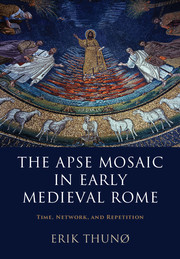Description
The Apse Mosaic in Early Medieval Rome
Time, Network, and Repetition
Author: Thunø Erik
This book focuses on apse mosaics in Rome and engages topics including time, intercession, materiality, repetition, and vision.
Language: English
Subject for The Apse Mosaic in Early Medieval Rome:
Approximative price 121.50 €
In Print (Delivery period: 14 days).
Add to cart
Publication date: 04-2015
358 p. · 18.8x26.2 cm · Hardback
358 p. · 18.8x26.2 cm · Hardback
Description
/li>Contents
/li>Biography
/li>
This book focuses on apse mosaics in Rome, which were commissioned by a series of popes between the sixth and ninth centuries CE. Through a synchronic approach that challenges current conceptions about how works of art interact with historical time, Erik Thunø proposes that the apse mosaics produce an inter-visual network that collapses their chronological succession in time into a continuous present in which the faithful join the saints in the one living body of the Church of Rome. Throughout, this book situates the apse mosaics within the broader context of viewership, the cult of relics, epigraphic tradition, and church ritual while engaging topics concerned with intercession, materiality, repetition and vision.
1. Repetition: saints, popes, and golden texts; 2. Transformation: from material church to spiritual body; 3. Incorporation: becoming a living stone; 4. Networking: building a communion sanctorum; Afterword: meaning and presence; Appendix.
Erik Thunø is Associate Professor of Medieval Art at Rutgers University. He is the author of numerous articles on medieval art and his book Image and Relic: Mediating the Sacred in Early Medieval Rome was published in 2002. He has been awarded fellowships by the Clark Art Institute, the Alexander von Humboldt Foundation, and the Bibliotheca Hertziana (Max Planck Institute for Art History) in Rome.
© 2024 LAVOISIER S.A.S.




